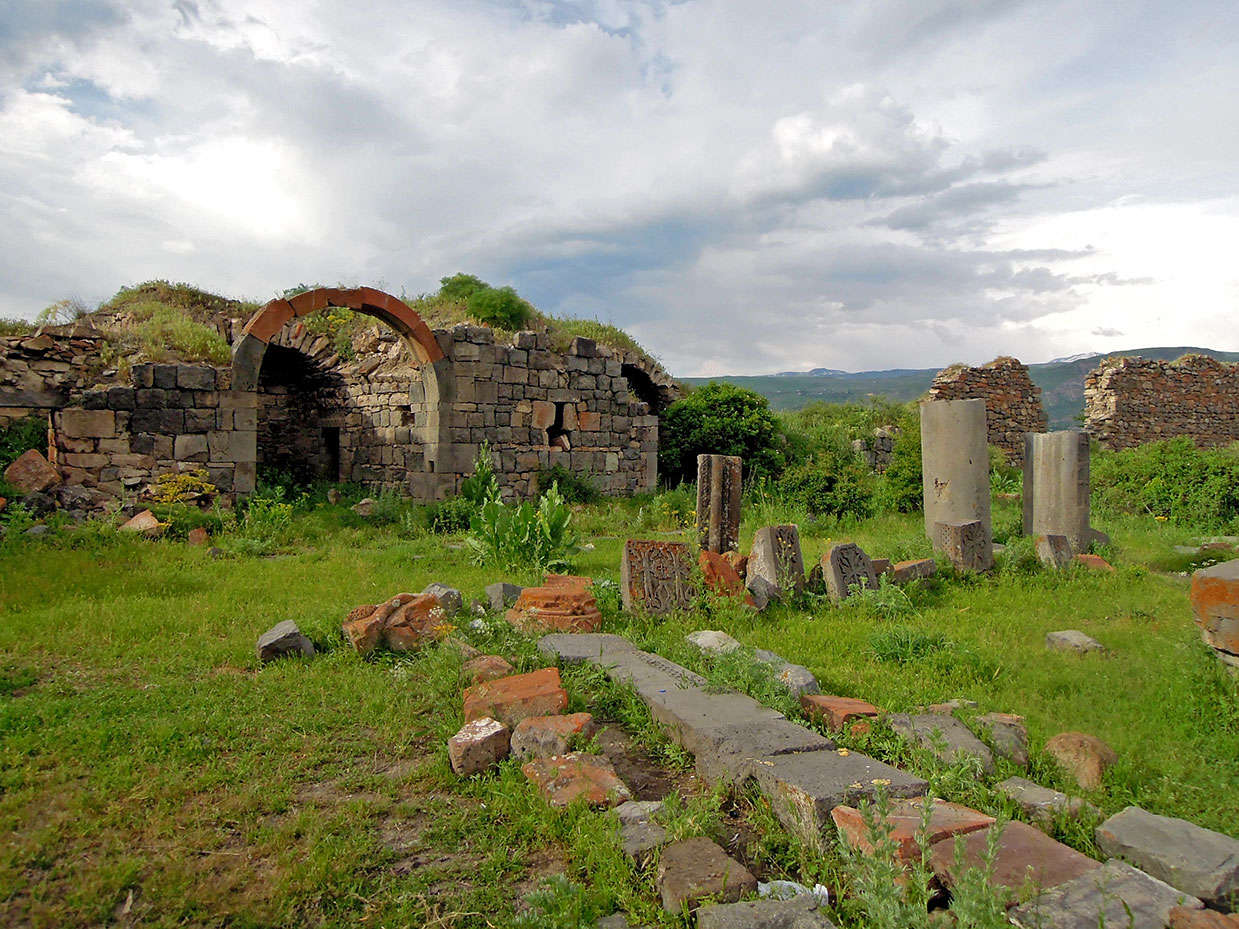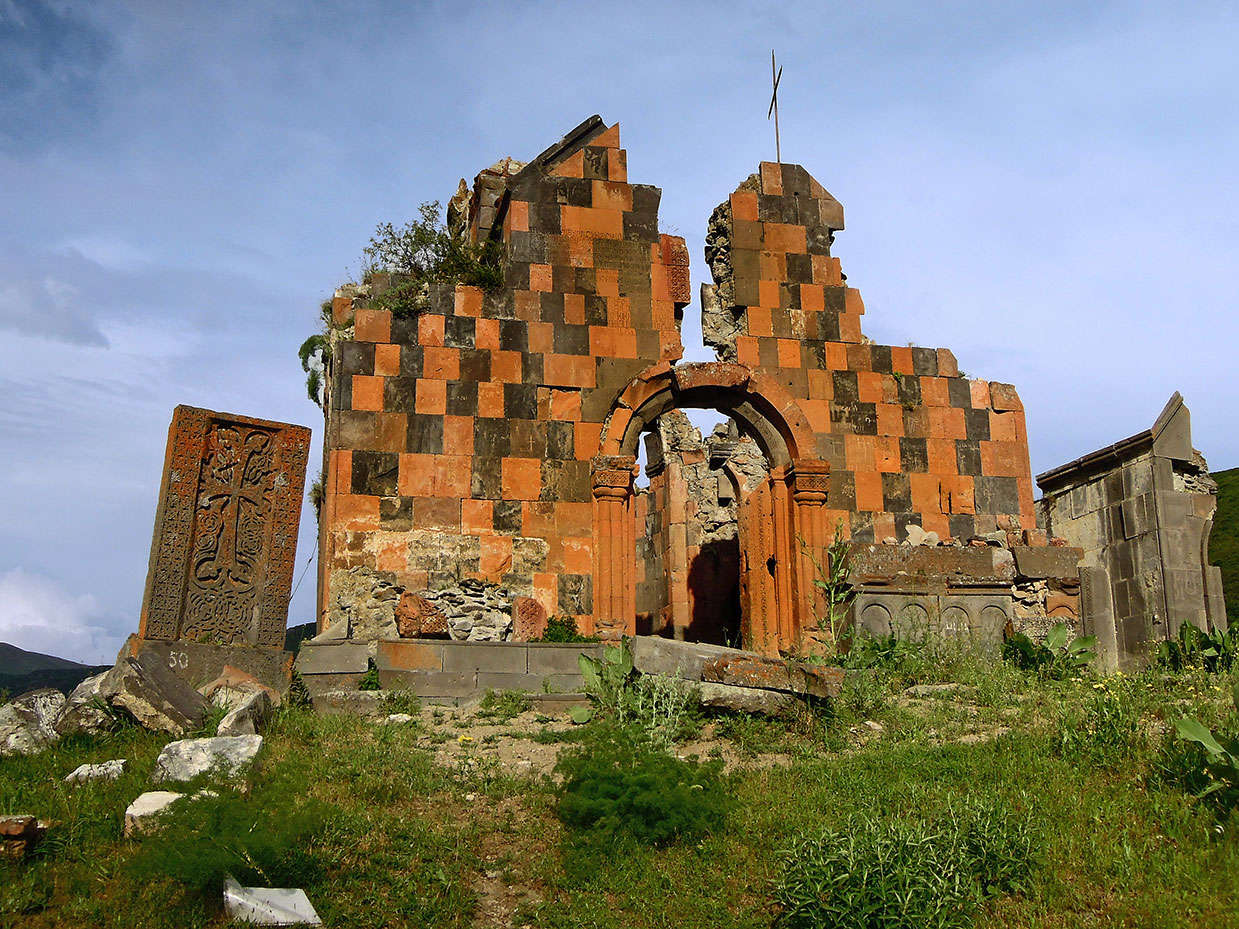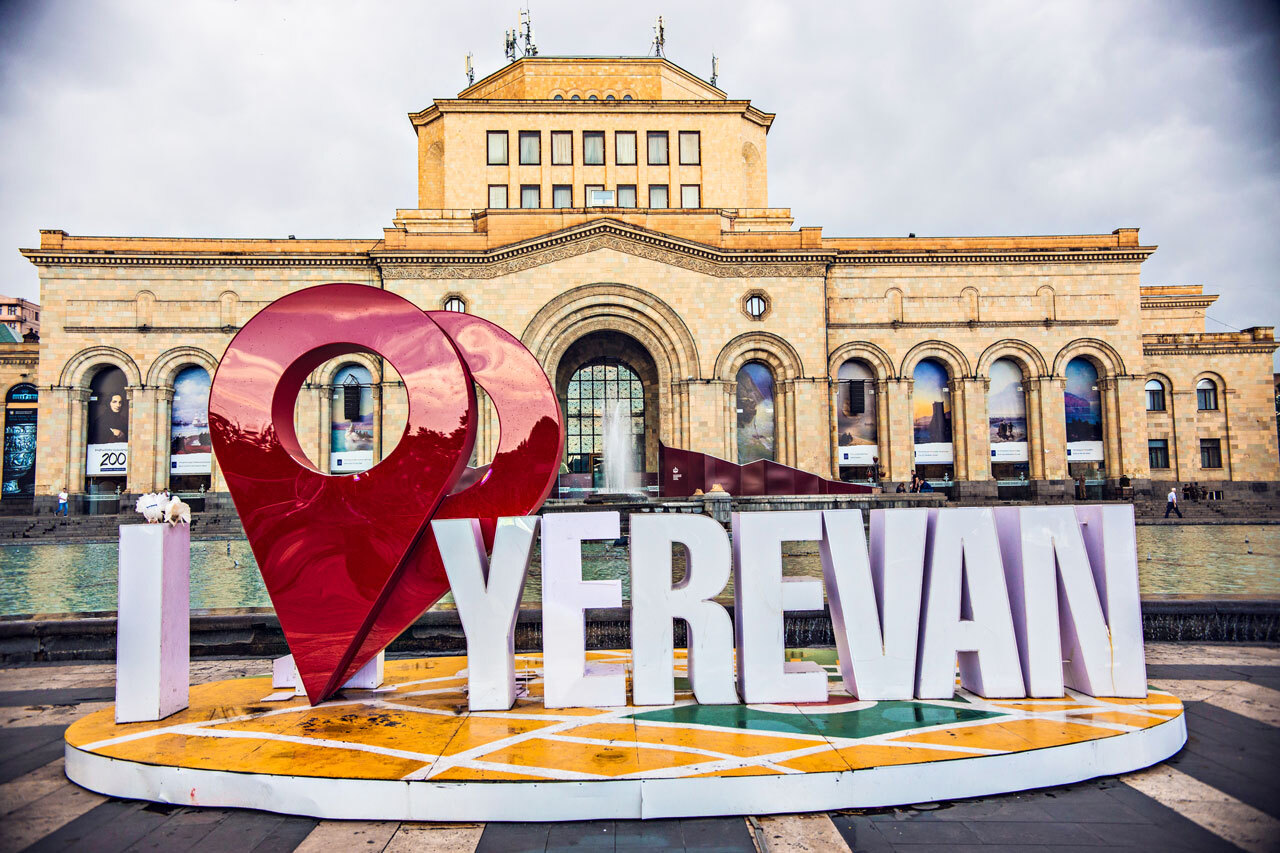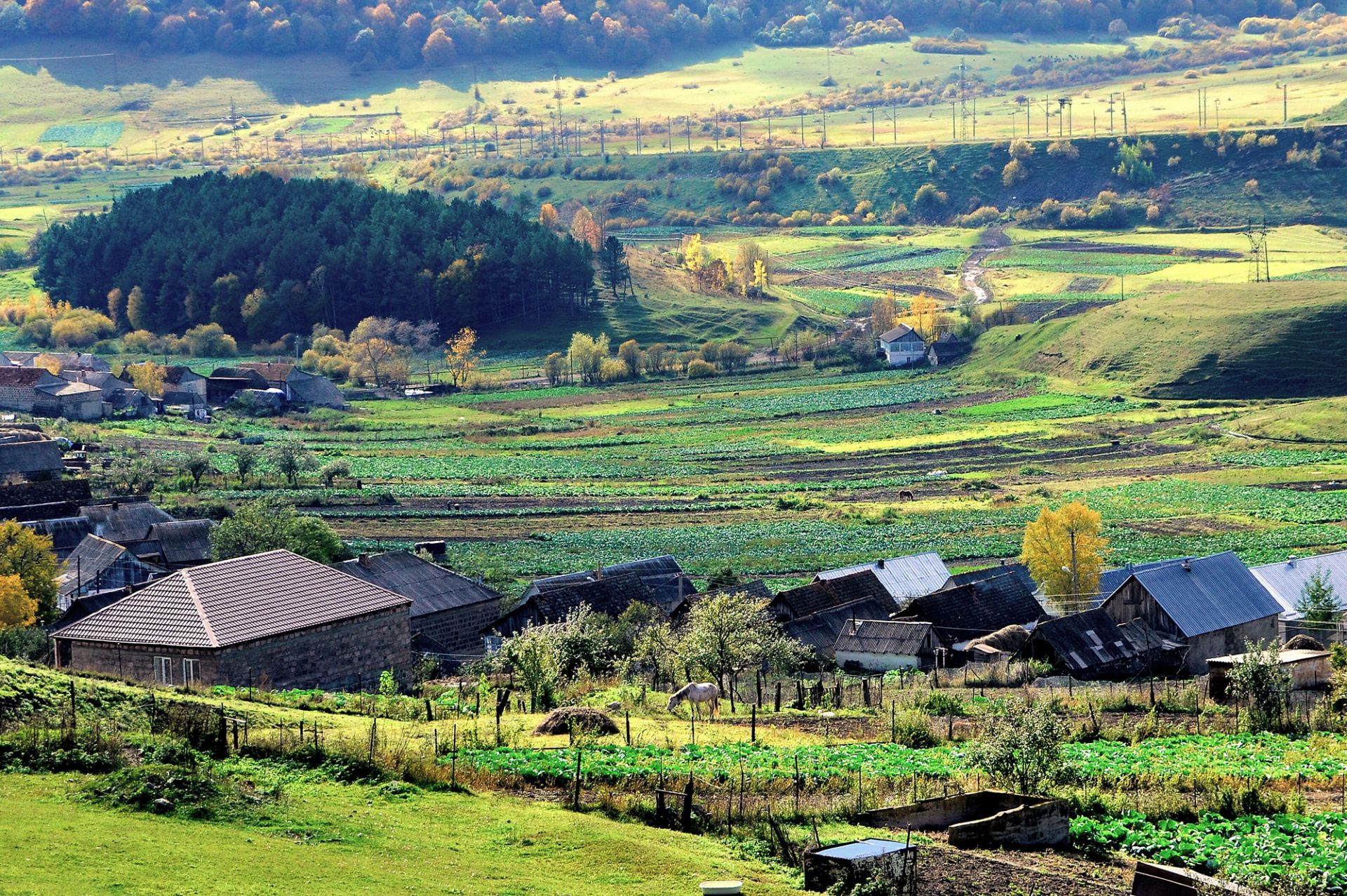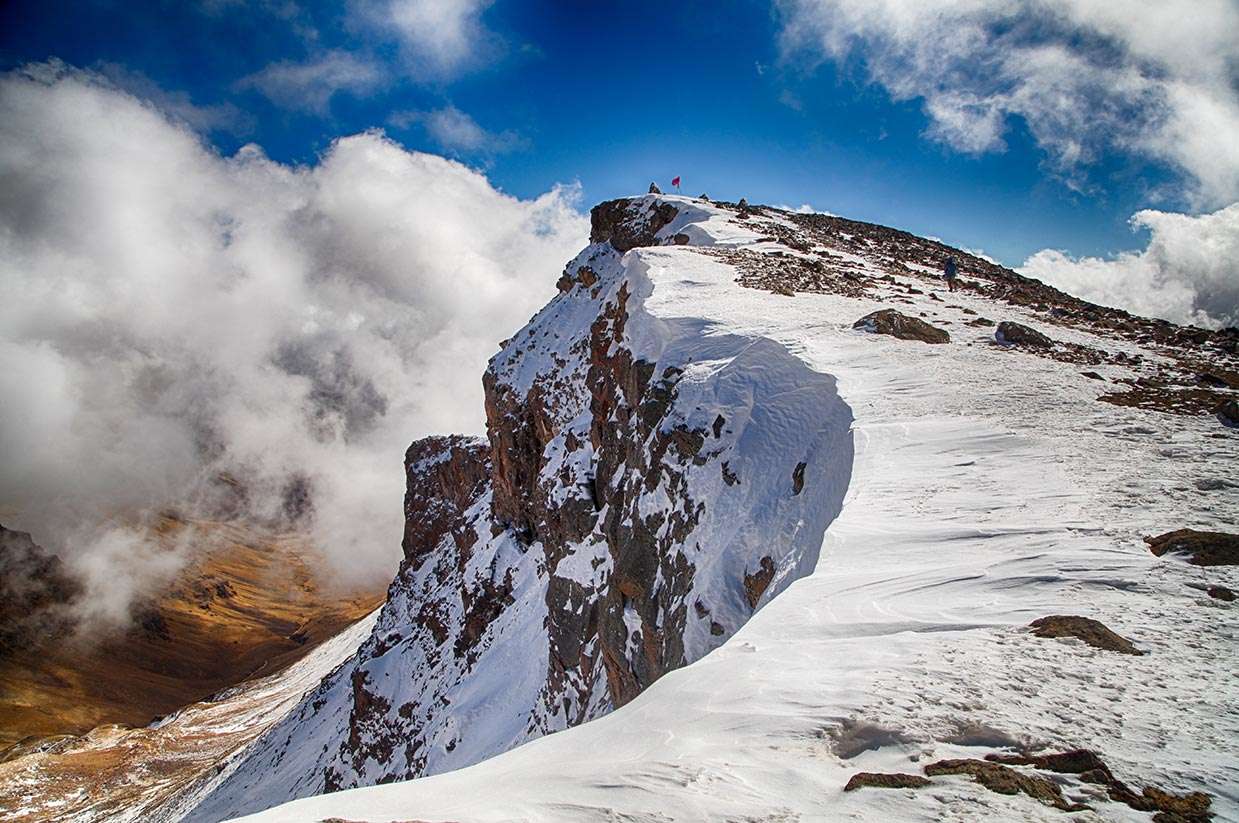Havuts Tar Monastery
Havuts Tar is a walled monastery from the 11th to the 13th centuries, which is located in the Kotayk Province. It is perched on a promontory along the Azat River valley opposite the villages Goght and Garni. Kotayk is located in the central part of Armenia. The provincial capital is Hrazdan, the largest city is Abovyan. It is named after the Kotayk canton of the historical province of Ayrarat in ancient Armenia. Kotayk is the only province in Armenia that has no borders with foreign countries. Many ancient sights and tourist attractions are located in Kotayk, such as the temple of Garni from the 1st century, the medieval Bjni Fortress, the 11th-century Kecharis monastery, and the 13th-century Geghard Monastery. It takes 30 minutes to reach the ruins of the monastery via the Havuts Tar Road. On the way you may discover the cross-stones.
A small field with a big cross-stone and a small ruined monument will appear in front of you in the vicinity of the monastery. Not far from here the fortress walls and ruins of the monastery complex will be discovered. Before entering the monastery, a small path leads to a hill. At the end of the path, there are the ruins of a small chapel with two large cross-stones. The largest part of the monastery was built between the 12th and 14th centuries. It was destroyed after an earthquake in 1679. In the following centuries, the complex was rebuilt and restored. The eastern foothills of Havuts Tar are surrounded by a rampart made of roughly carved stones that are firmly cemented. Access to the monastery is through an arched entrance on the southeastern corner, which is connected to the main path. Within its boundaries there are two churches positioned in the middle (the main church with intact surrounding walls and the ruins of other adjacent buildings), the ruins of a gavit of the main church, monastery buildings along with the northern and southern interior walls, vaulted guest chambers and a large underground chamber, which probably served as a manuscript library on the south wall. The main church is characterized by the decorative relief that can be found on the exterior and interior walls. There is a single entrance to the church from the west, through a highly decorated façade, which is built of burnt orange and dark grey tuff to highlight its unique architectural details. A similar technique is also used in the interior. Carvings of birds adorn the tympanum above the western portal, the southern outer wall and one of the niches inside.
The construction of a new church began in 1772, but its construction remained incomplete. On the western outcrop on a hill overlooking the valley, there is a structure often referred to as Amenaprkich Church (which can be seen from the other side of the ravine to the Garni Temple) with a small number of graves nearby. Historical reports mention that Gevorg Marzpetuni originally built the church in the 10th century. Some sources indicate that Amenaprkich is the main church of the eastern outcrop. Amenaprkich Church is dome-shaped, with the cylindrical drum. The outer walls are constructed in an alternating checkerboard pattern of burnt orange and dark grey tuff. The structure was built with two vertical niches on the eastern wall to provide overall strength and stability, as well as increasing resistance to collapse during earthquakes. On the southern and western outer walls, one may see some inscriptions. The ruins of a small vaulted church, later built of grey basalt, is located next to the southern outer wall of Amenaprkich. A large part of the adjacent structure is collapsed and lies at the base of the underlying hill. Tourists travelling in Armenia have a chance to enjoy the monastery and its surroundings and get wonderful impressions.

